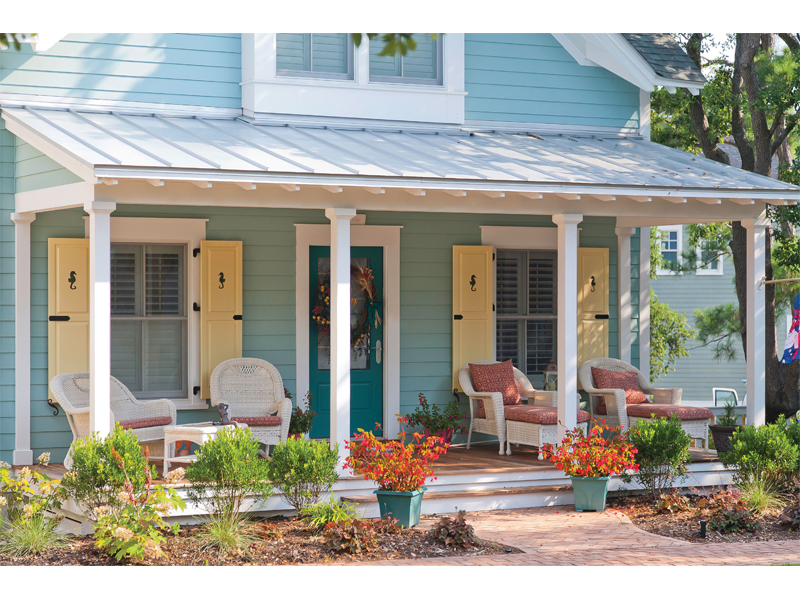The home exterior can say a lot about the occupants within while also making a first impression on guests (and potential buyers). Because of the impact curb appeal has on the amount prospective buyers are willing to spend on a home, it’s important for homeowners to look beyond simply choosing the right siding color and consider different siding materials and profiles, adding accents like stone veneer and researching other high-ROI exterior upgrades that can both increase beauty and deliver performance over time.
In fact, exterior remodeling projects top the list of projects that add the most resale value to homes. According to Remodeling’s 2022 Cost vs. Value Report, nine of the top 10 projects delivering the best return on investment were exterior renovations.
Consider these high-ROI exterior upgrades from the experts at Westlake Royal Building Products that can improve aesthetics and increase resale value for your customers.
Front Door
If replacing the front door isn’t necessary, adding a fresh coat of paint is a simple way to refresh the home’s exterior. You can take the “dated” door and make it modern again with a bold, on-trend color. Take it a step further by adding artistic house numbers, a new light fixture, or a door knocker in an unexpected shape for inexpensive pops of style.
Vinyl Siding
Updating the home’s exterior with vinyl siding yields a 67.2% return upon sale, according to the Cost vs. Value report. When considering new siding, look for high-quality, low-maintenance materials. Depending on location, insulated vinyl siding can add additional protection against the elements, as well as increased energy efficiency. While function is important, don’t be afraid to make bold choices with color, texture, different profiles, and contrasting trim to make a true statement.
For example, Westlake Royal Building Products offers a wide range of vinyl siding options in the latest shades, including five new on-trend colors recently added to its Royal Siding and Exterior Portfolio lines. Inspired by colors found in nature, the gray, blue-gray, brown, and green tones reflect the latest trends in modern exterior home design. Both lines feature patented color protection technology to resist fading, which is especially important for darker shades.
Shutters
Adding or replacing shutters is another easy way to add a bit of flair and can be a key finishing touch in creating the perfect exterior. With the potential to play beautifully alongside windows and siding as well as with architectural style and the surrounding landscaping, it’s important to make thoughtful choices and install them properly to ensure they look and function as designed. (See installation mistakes to avoid here.)

Composite Decking
Another exterior remodeling project with a high ROI (62.1%), according to the report, is replacing your home’s existing wood deck with composite decking. An option like Zuri Premium Decking combines the natural beauty and warmth of exotic hardwood with the durability and low-maintenance requirements of PVC (cellular polyvinyl chloride), which resists stains, scratches, fading, and moisture, for a deck that will last for years with minimal upkeep.
Manufactured Stone Accent Wall
Manufactured stone veneer on the bottom third of a home’s front façade delivered the second-highest return in this year’s Remodeling Cost vs. Value Report, with 91.4% ROI. Versetta Stone panelized stone siding makes it easy to achieve this look—the mortarless format attaches to the wall using nails or screws, and each lightweight panel features a built-in rainscreen.
Column Wraps
Give the front porch an instant facelift by wrapping the existing columns with PVC wraps. This is an easy way to achieve a cleaner and more modern, updated look. Resistant to moisture, PVC column wraps prevent issues found in traditional wood columns, such as warping, rotting, and insect damage. Available in a variety of ready-to-install styles, they can also be painted to complement your home’s exterior color palette.
Find more ideas to increase a home’s beauty and resale values at westlakeroyalbuildingproducts.com.
(Remodeling 2022 Cost vs. Value Report: © 2022 Zonda. Complete data from the Remodeling 2022 Cost vs. Value Report can be downloaded free at www.costvsvalue.com.)



